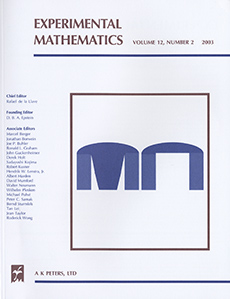Abstract
Pursuant to the authors' previous chaotic-dynamical model for random digits of fundamental constants, we investigate a complementary, statistical picture in which pseudorandom number generators (PRNGs) are central. Some rigorous results are achieved: We establish b-normality for constants of the form $\sum_i 1/(b^{m_i} c^{n_i})$ for certain sequences $(m_i), (n_i)$ of integers. This work unifies and extends previously known classes of explicit normals. We prove that for coprime $b,c>1$ the constant $\alpha_{b,c} = \sum_{n = c, c^2, c^3,\dots} 1/(n b^n)$ is b-normal, thus generalizing the Stoneham class of normals. Our approach also reproves b-normality for the Korobov class $\beta_{b,c,d}$, for which the summation index n above runs instead over powers $c^d, c^{d^2}, c^{d^3}, \dots$ with $d>1$. Eventually we describe an uncountable class of explicit normals that succumb to the PRNG approach. Numbers of the $\alpha, \beta$ classes share with fundamental constants such as $\pi, \; \log 2$ the property that isolated digits can be directly calculated, but for these new classes such computation tends to be surprisingly rapid. For example, we find that the googol-th (i.e., $10^{100}$-th) binary bit of $\alpha_{2,3}$ is 0. We also present a collection of other results---such as digit-density results and irrationality proofs based on PRNG ideas---for various special numbers.
Citation
David H. Bailey. Richard E. Crandall. "Random Generators and Normal Numbers." Experiment. Math. 11 (4) 527 - 546, 2002.
Information




